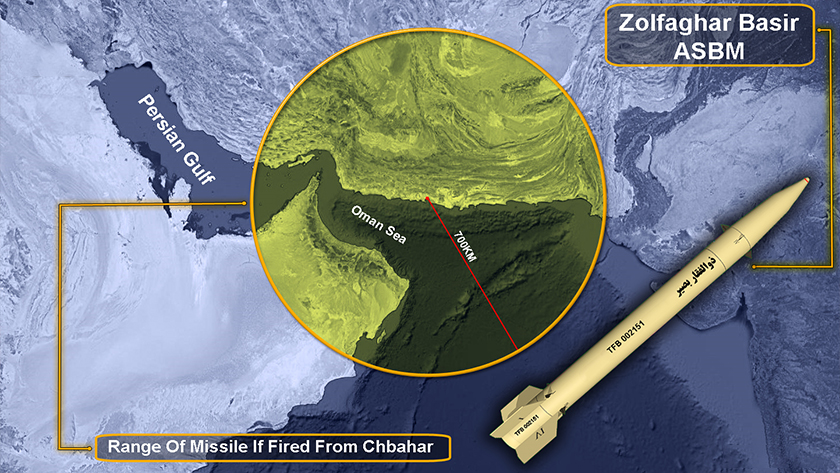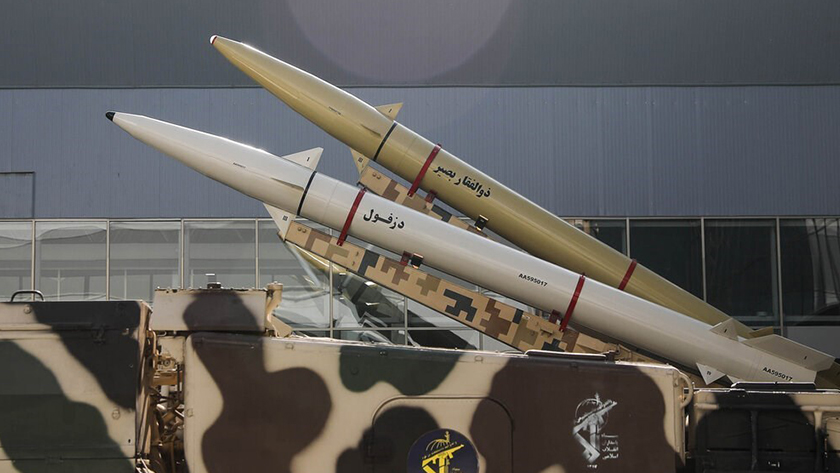Iran Press/ Commentary: Today, relying on internal capability and maximum use of available capacities in short time intervals, new and modern missiles are unveiled by Iran's armed forces, and with the introduction of each of them, the ability of the Islamic Republic in the field of offense and defense becomes more visible.
The two characteristics of "knowledge- based" and "indigenization" have caused Iran's missile capability to develop in the last three decades, and today it has reached a level of progress that a wide range of ballistic missiles are available to the Iranian armed forces.
In fact, ballistic missiles are an important part of Iran's missile capability and are considered one of the most effective weapons on the battlefield, which have the ability to inflict heavy and deadly blows against the enemy.
Iran's missile power, especially in the field of maritime ballistic missiles, is one of the areas that has been intelligently developed, and with recent revelations, it seems that its development is still on the agenda because if we consider the military threat to our country in the future, that threat will be sea-based.
Related News:
Iran achieves ballistic missile guidance tech under sanctions
The development of maritime ballistic missiles, along with a diverse range of maritime cruise missiles, whose range has reached more than a thousand kilometers with the Abu Mahdi cruise missile, indicates that a strong arrangement has been organized to deal with sea-based threats in the army and the IRGC, which can respond to have a suitable and complete solution against the seabed threat.
The important role of naval ballistic missiles
Regarding operations against enemy ships, a diverse array of weapons together forms the defensive and offensive power of the Islamic Republic of Iran. In this area, the armed forces have anti-ship cruise missiles launched from land and sea launchers and submarines and fighters, torpedoes fired from submarines, and finally, sea-based ballistic missiles with different ranges and a variety of guidance methods.
The specificity of naval ballistic missiles in this array is due to several reasons:
First, apart from Iran and China, no other country is an official user of ballistic missiles in the anti-ship role.
Second, due to the special characteristics of ballistic missiles, including very high speed along the path, high weight of the warhead, and diving on the target with a high angle, these missiles have a low probability of destruction by the enemy's defense systems, and high effectiveness and destruction capability.
The important point is that the development of anti-ship ballistic missiles, which are abbreviated as ASBM, is not very common in the world, and currently, except for Iran, which has developed them in three types, and China, which has developed the DF-21D missile as an anti-ship ballistic missile, any other country does not have this weapon.
Related News:
Hormuz ballistic missiles, another advance in Iran's naval capability
Anti-ship ballistic missiles to target enemy ships are a big challenge for them because due to the high speed of ballistic missiles when they enter the atmosphere and hit the target, it is almost impossible to intercept and destroy them for the sea-based defense systems.
Another challenge and danger that the use of these missiles has for enemy ships is the destructive power of the warhead of these missiles due to their high weight and kinetic energy resulting from their impact on the target, which can inflict effective blows on enemy vessels.
Introduction of "Zulfiqar Basir" missile
One of Iran's important missile achievements in the maritime and anti-surface field is the "Zulfiqar Basir" missile, which has been developed and operated to deal with enemy ships at long distances.
On August 30, 2020, the permanent exhibition of the achievements of the Islamic Revolution Guard (IRGC)Corps Aerospace Force was opened in the presence of Mohammad Baqer Qalibaf, Speaker of the Parliament, and Major-General Hossein Salami, the Chief Commander of the IRGC, and in it, the latest maritime ballistic missile, the Zulfiqar Basir anti-ship ballistic missile, was presented as the new generation of the Iranian anti-ship ballistic missile family was introduced, which is considered the third maritime ballistic missile of Iran after the Persian Gulf and Hormuz missiles.

The main difference between Zulfiqar Basir compared to the Persian Gulf and Hormuz missiles are the increase in the range of anti-ship ballistic missiles from 300 km to 700 km, which in fact, has created a new arm for Iran along with anti-ship cruise missiles in the sea.
Read Also:
Commentary: Zafar anti-ship missile
This missile is the newest missile of the next generation of the Persian Gulf anti-ship ballistic missile. "Zulfiqar Basir" missile, equipped with a warhead with an optical detector, has a range of more than 700 km.
Previously, the Persian Gulf and Hormuz naval ballistic missiles had a range of 300 and 250 kilometers. The surface-to-surface Zulfiqar missile has a range of 700 to 750 kilometers and has been used in cross-border operations against ISIS.
The Zulfiqar missile was introduced in 2016 as a solid fuel, short-to-medium-range, operational (tactical) missile, which later turned out that even though this missile was designed at the operational level, it has strategic effects.

This missile, with a range of 700 km and equipped with a 579 kg warhead, was introduced, and a few days later, its production line was shown. The Zulfiqar missile has reached 2.3 times its range with a 1.5-meter increase in length, a 7 cm diameter increase, and a 39% increase in mass compared to the Fateh 110.
The Zulfiqar Basir missile also has the same capabilities as the Zulfiqar missile by being equipped with an optical detector. This missile was used for the first time without mentioning its name in the exercise of the Great Prophet- 14 of the IRGC in August 2020, and the spokesperson of this exercise referred to it as a surprise weapon.
The importance of "Zulfiqar Basir" missile
Increasing the range of Iran's anti-ship ballistic missiles from 300 km to 700 km will bring a great advantage, which is increasing deterrence at sea and pushing back the American ships to stationary points farther from the northern Indian Ocean and the Arabian Sea.
One of the issues that the Americans always use as a lever of military and, in some cases, even psychological pressure against Iran is the presence of their aircraft carrier in the waters of the Persian Gulf.
In 2010 and after the unveiling of the Persian Gulf Sea Ballistic Missile, the Americans gradually reduced their presence in the Persian Gulf region due to the serious danger this missile posed to their fleet.
Related News:
Persian Gulf ballistic missile; pinpoint accuracy to destroy naval targets
On the other hand, the 300-kilometer range of Iran's sea-based ballistic missiles had even made them choose more distant staging points, so the Eisenhower aircraft carrier, which was sent to the region in March 2019 at the same time as the tensions between Iran and the United States escalated in June 2020, was present in the Arabian Sea and considered it a safe area and out of the range of Iran's maritime ballistic missiles.
Now, considering the 700 km range of the Zulfiqar Basir missile, this enables Iran to turn the northern areas of the Arabian Sea into an unsafe area for American ships because if there is a threat to our country from this area, the American ships can easily be targeted by naval ballistic missiles.
By: Reza Mirtaher
206
Read More:
Shafaq missile, a step to improve capability of attack helicopters
Iran Unveils New Helicopter-launched Missile
Iranian researchers show Iran's progress by building world's biggest radio telescope
ahmad shirzadian

